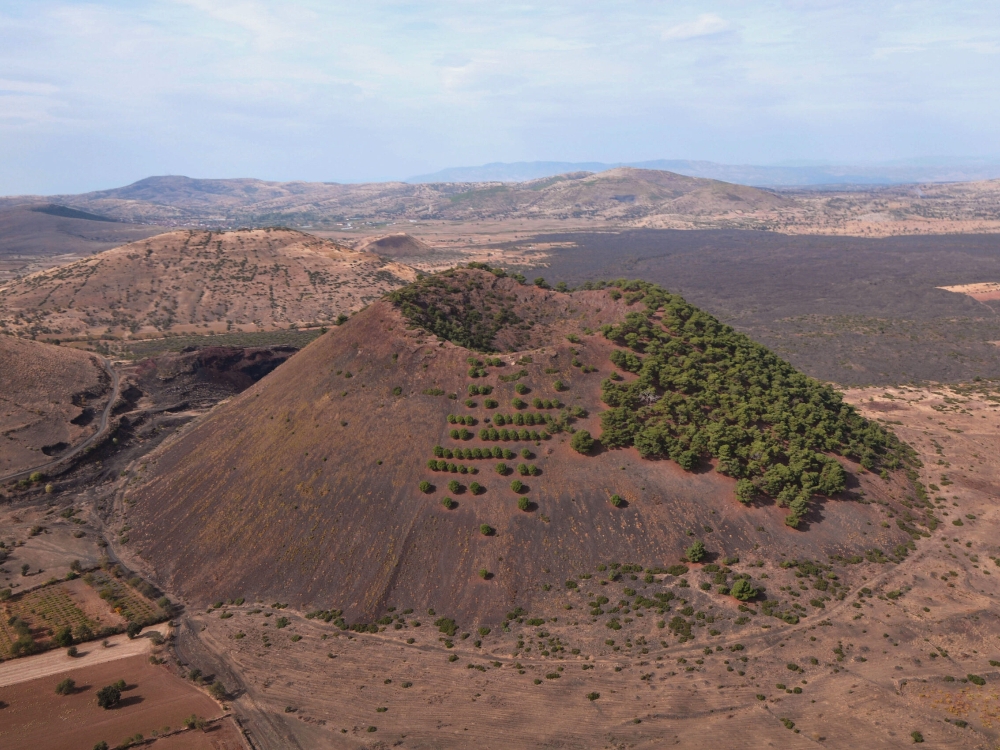Sandal Divlit

This cone is one of the 80 volcanic cones in the area and one of the most spectacular parts of the volcanic landscape formed during the 4th phase of Kula volcanism around 25 thousand years ago. Its physical appearance is similar to that of a miniature volcano. It resembles a scoria cone or cinder cone type volcano in terms of its formation and shape. A cinder cone is a steep conical hill of loose pyroclastic fragments, formed of either volcanic clinker, volcanic ash, or cinder, that has been built around a volcanic vent. The pyroclastic fragments are formed by explosive eruptions or lava fountains from a single, typically cylindrical, vent. The constituent parts of the cone can be of very different sizes ranging from very fine-grained ash size material to volcanic bombs of a size that can exceed 1 meter in diameter. This type of volcano cones in the Kula region is called "Divlit". The pyroclastic materials forming the Sandal-Divlit cone are of a black-dark brown colour, usually of hazelnut-lentil size, with multi-hollows. With a freshly formed and distinct appearance, the height of this cone is 900m above sea level and its relative elevation is 150 m. Its crater is 225m m. in wide. With quite a visible appearance from the İzmir-Ankara highway, this cone is one of the most characteristic volcanic cones formed in the course of Kula volcanism. The Sandal cone, which preserved its natural structure (Sandal Divlit), is also one of Turkey's youngest volcanic cones.
Below you can examine another volcano cone in 3D.







